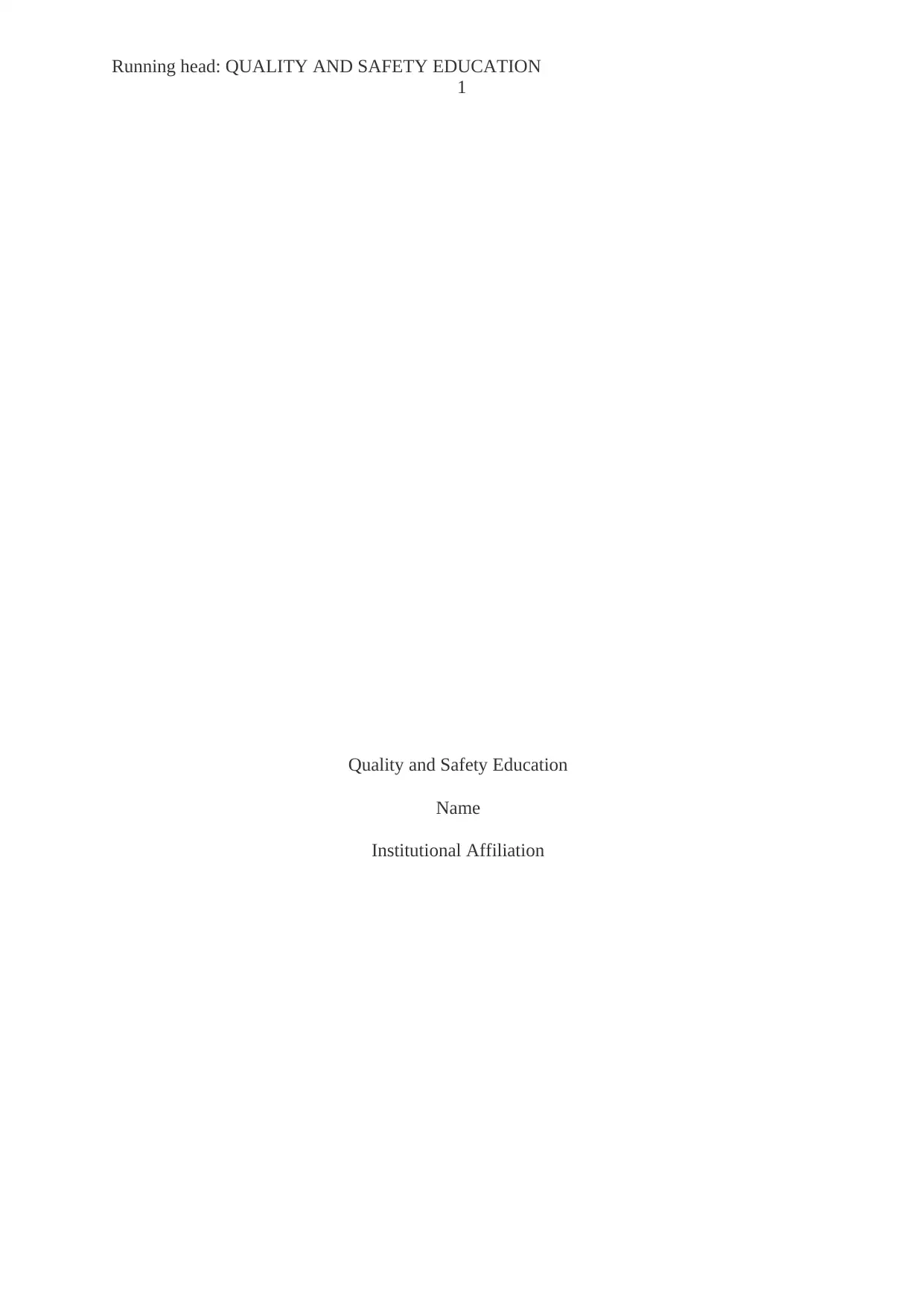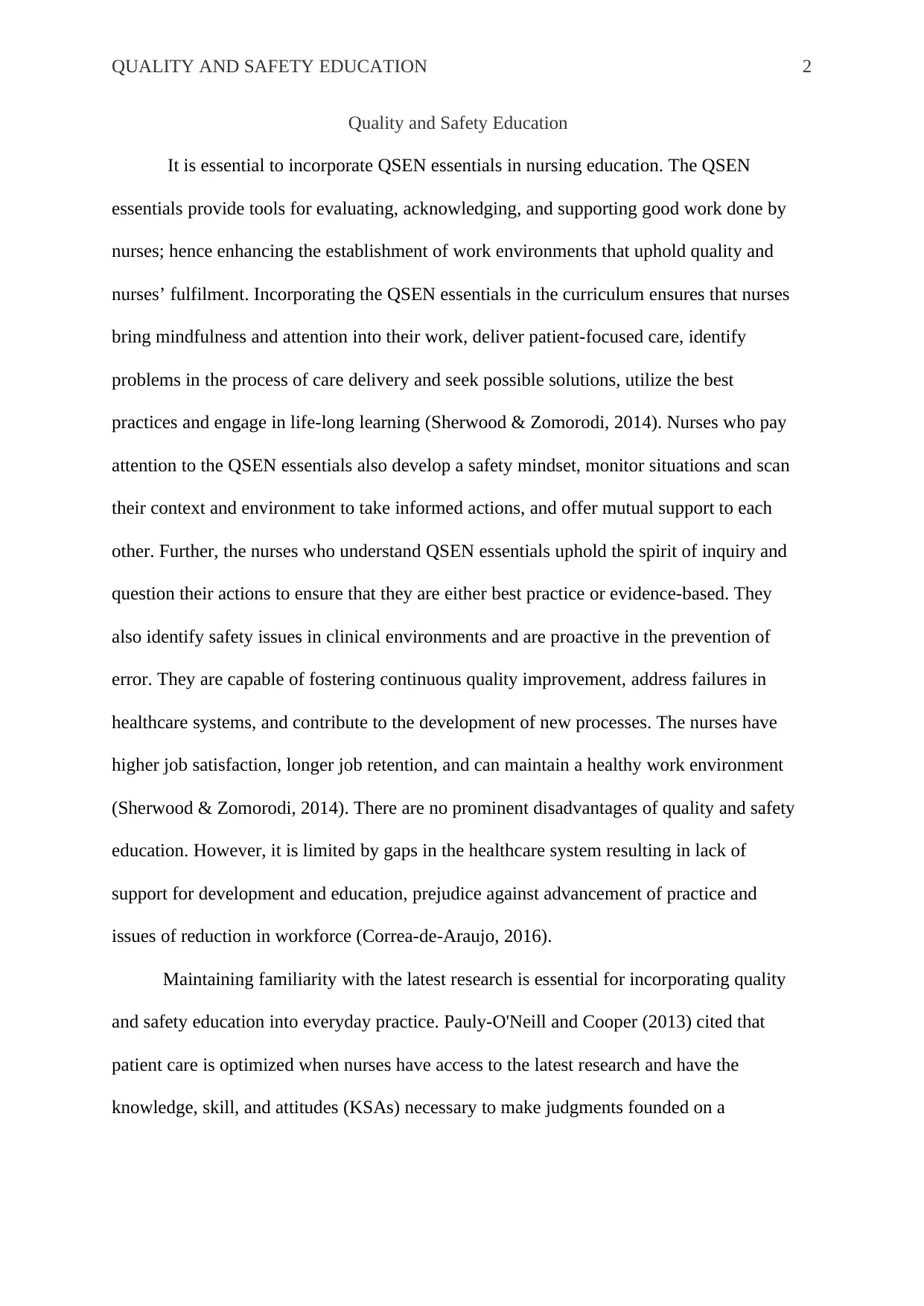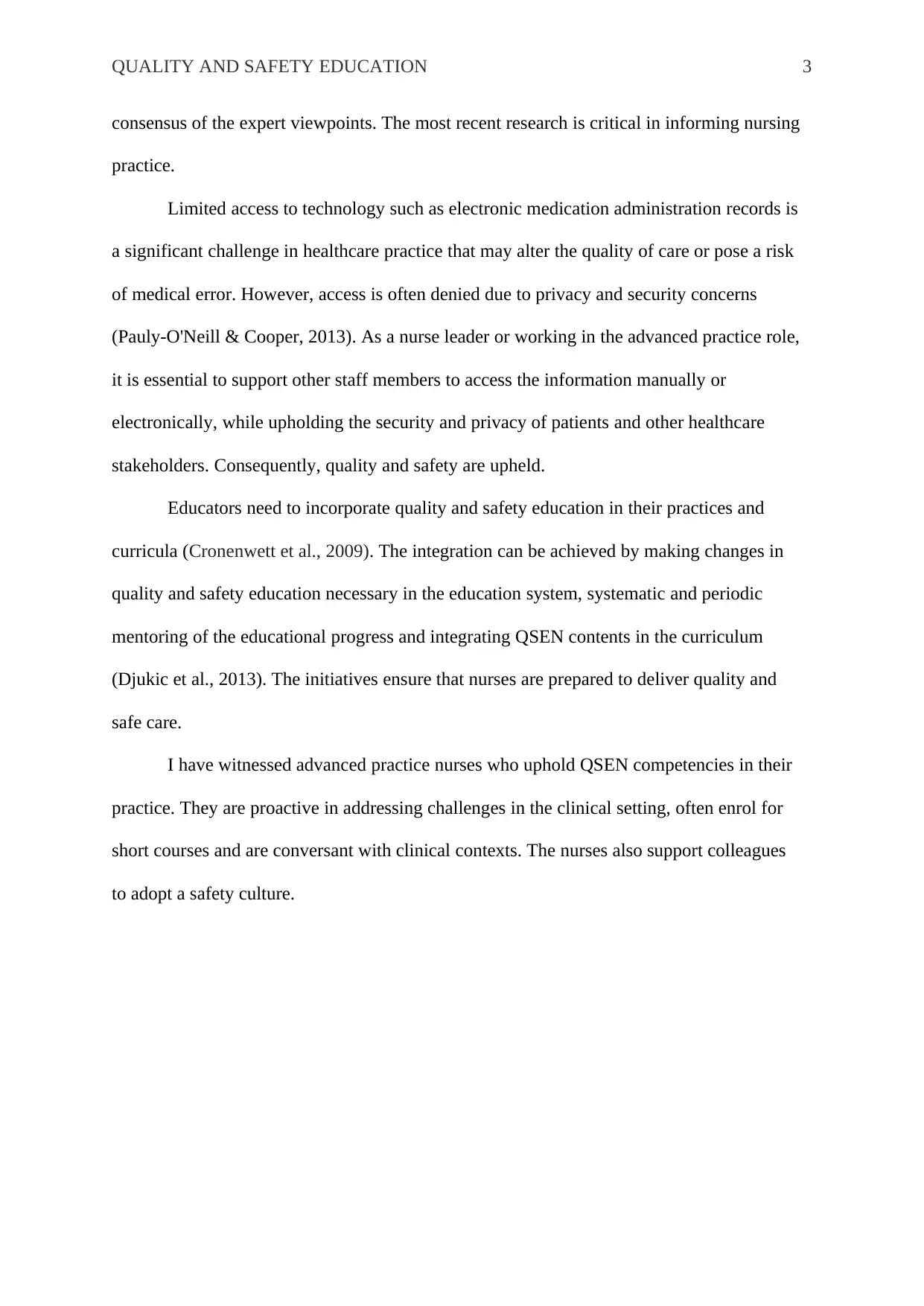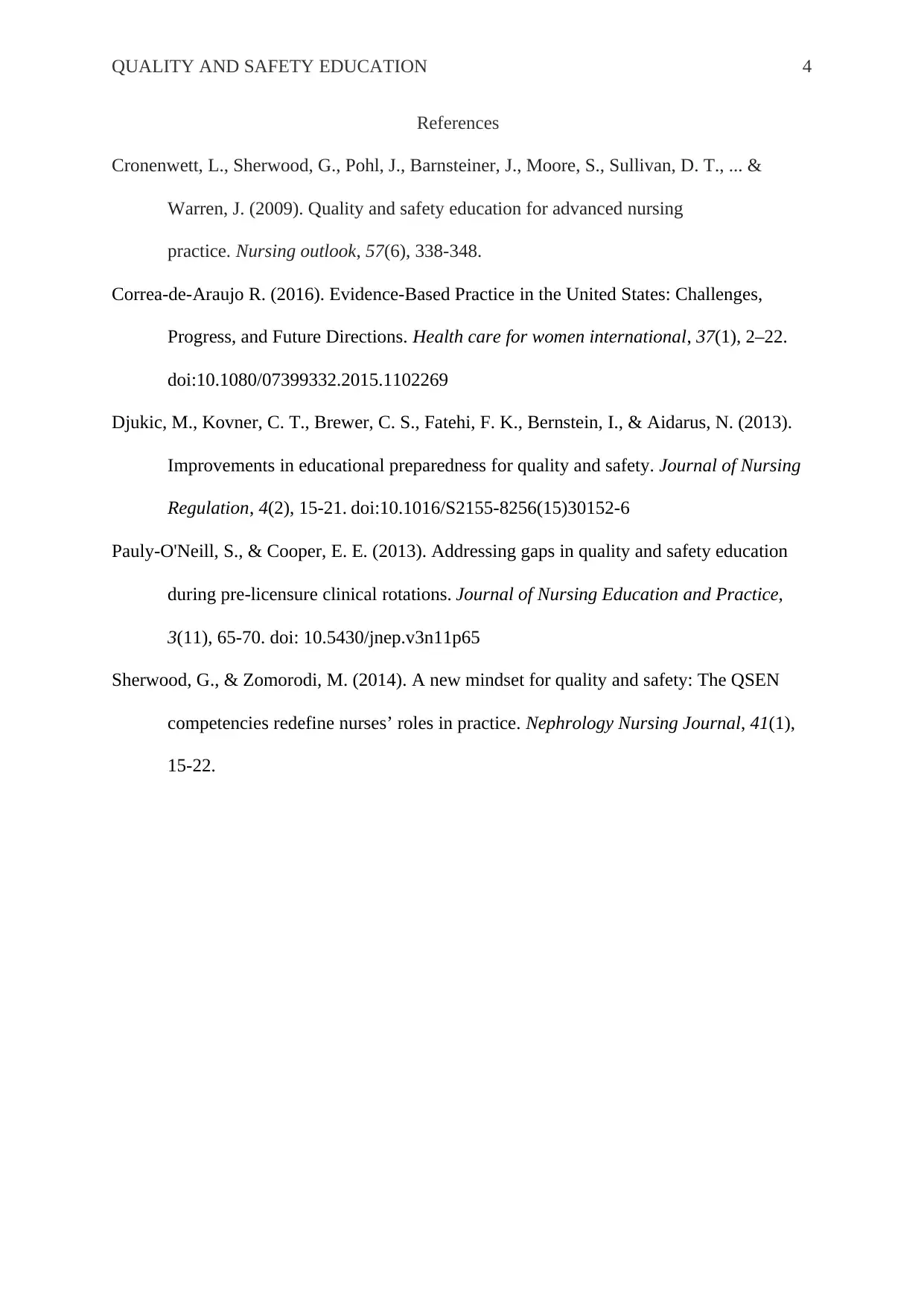Quality and Safety Education for Advanced Nursing Practice - Essay
VerifiedAdded on 2022/12/15
|4
|837
|84
Essay
AI Summary
This essay discusses the importance of incorporating Quality and Safety Education for Nurses (QSEN) essentials into nursing education to enhance patient-focused care, problem identification, best practices, and lifelong learning. It highlights how QSEN-trained nurses develop a safety mindset, support each other, and proactively prevent errors, leading to higher job satisfaction and a healthier work environment. While acknowledging limitations such as healthcare system gaps and workforce reductions, the essay emphasizes the need for nurses to stay updated with the latest research and address challenges like limited access to technology. It concludes by advocating for educators to integrate quality and safety education into curricula and practices, and shares observations of advanced practice nurses who effectively uphold QSEN competencies in their clinical settings.
1 out of 4











![[object Object]](/_next/static/media/star-bottom.7253800d.svg)